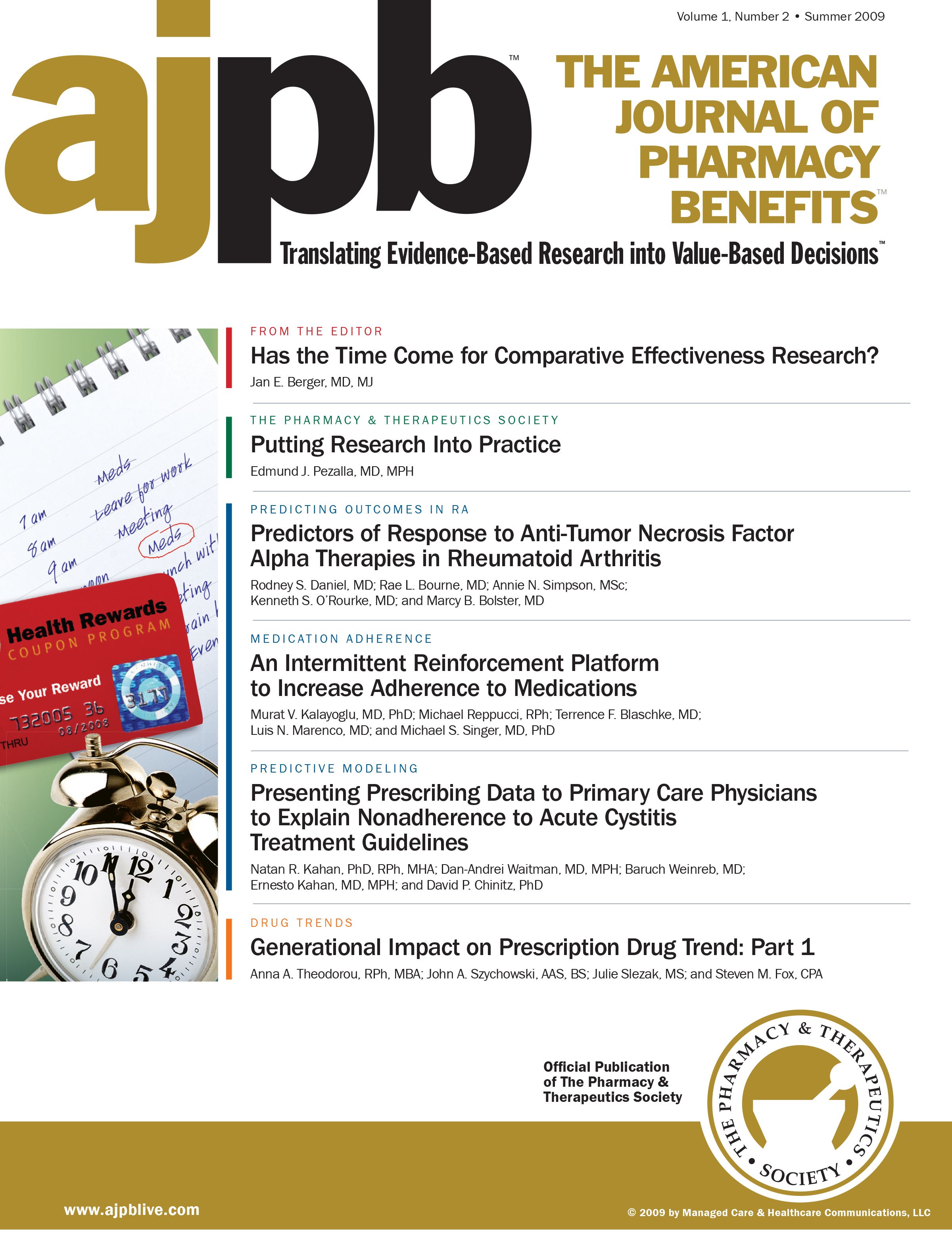Publication
Article
AJPB® Translating Evidence-Based Research Into Value-Based Decisions®
Value-Based Health Design: Putting the Patient at the Center
Author(s):
Ms Nayer praises the bold collaborations between pharmaceutical companies and health plans that base contract incentives on improving health outcomes, not the volume of drugs sold.
To maximize the financial value of every healthcare dollar spent, we have to prioritize resources, identify vulnerable populations, and support the behavior changes that motivate better outcomes. However, incentives in the healthcare industry have been misaligned across the supply chain.
For example, in the pharmaceutical world rebates and incentives are created based on product positioning. Manufacturers offer rebates to health plans to motivate use of their specific products; the rebate often is calculated on expanded market share rather than patient outcomes. Value-based designs can alleviate misaligned incentives through evidence-based reforms that offer the win-win solution of healthier patients and improved cost-efficiency. Two strategies that put patients and their health at the center of the contracting and incentive system are described below.
In 2007, the United Kingdom’s National Institute for Health and Clinical Excellence accepted an offer from Johnson & Johnson to provide a money back guarantee for its cancer drug Velcade. When patients do not respond to the drug, Johnson & Johnson will refund the cost of treatment. In this way, use of Velcade becomes cost-effective for the National Health Service in England.1,2
In April 2009, Health Alliance Medical Plans announced the Fracture Protection Pilot Program, which reduces the cost of the drug Actonel for the plans. Under this program Procter & Gamble and sanofi-aventis, the makers of Actonel, will help pay for treatment of certain nonspinal osteoporotic fractures among Health Alliance members compliant with Actonel therapy.2,3
However, incentives must track beyond just the rebate on the drug to support improved health through medication management, condition management, and access to appropriate care. For this reason, the recent outcomesbased contract between Merck and Cigna,2,4 targeting the health of diabetic patients within Cigna’s covered population, is a praiseworthy step forward in rebalancing the system through value-based design.
The first part of this contract is a traditional incentive based on rebate. Moving Merck’s drugs, Januvia and Janumet, from the third tier to the second tier triggered a bigger rebate to Cigna. This is a well-known model in the industry.
The second part of this contract is both innovative and unique. Under the agreement between Merck and Cigna, the rebate escalates when control of diabetes is achieved in the covered population, no matter what drug the patient took. In plain terms, if the patients’ indicators are controlled, the rebates from Merck go up, even though patients may be taking drugs made by other companies.
This bold step is a true collaboration between the health plan, with its condition-management expertise, and the pharmaceutical manufacturer, with its adherence-management expertise. It is exactly in the direction of the alignment that will drive true change. All healthcare sectors have been calling for patient-centered care. This contract removes access barriers and rewards outcomes, not processes or positions.
Value-based design already is getting attention from the federal government. A bipartisan bill sponsored by Sen. Kay Bailey Hutchison (R-TX) and Sen. Debbie Stabenow (D-MI) would set up a pilot program testing value-based design for Medicare. What these senators realize, and others are modeling, is that providing the right medicine and the right care for the right person at the right time is, remarkably, the right thing to do.
Outcomes-based contracting will prove to be a first step toward realignment of the incentives. With this realignment the patient will win, and all stakeholders in the value chain potentially will share in the rewards. When the patient gets better, there is less drain on the system; therefore, there are more resources to share. That is the aligned transformation we are seeking.
Financial stability will increase when we focus on the improved health of our people, our businesses, and our communities. Hats off to the bold, brave innovators in the value chain.







